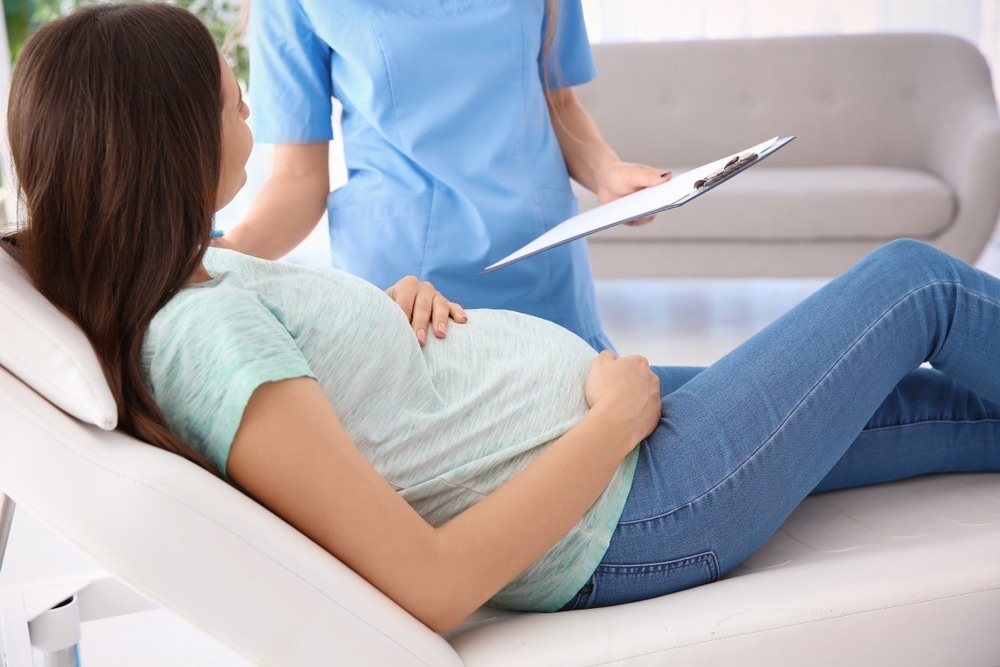Associations between potentially endocrine-disrupting chemicals and female fertility in women attending fertility clinics
In a recent study published in Environmental Research, researchers examined the correlation between female fertility and chemical mixtures. Learning: Association between chemical mixtures and female fertility in women undergoing assisted reproduction in Sweden and Estonia. Photo credit: New Africa/Shutterstock Background Up to one in six women of childbearing age have difficulty becoming pregnant or carrying a pregnancy, and reproductive health problems are becoming increasingly common worldwide. Live birth success rates have remained consistent despite an increase in the use of assisted reproductive technologies (ARTs) among those with reduced fertility. It is plausible to assume that man-made chemicals that disrupt the endocrine system lead to...

Associations between potentially endocrine-disrupting chemicals and female fertility in women attending fertility clinics
In a recently published study in Environmental research Researchers examined the correlation between female fertility and chemical mixtures.

Lernen: Assoziation zwischen Chemikalienmischungen und weiblicher Fruchtbarkeit bei Frauen, die sich einer assistierten Reproduktion in Schweden und Estland unterziehen. Bildnachweis: Neues Afrika/Shutterstock
background
Up to one in six women of childbearing age have difficulty conceiving or carrying a pregnancy, and reproductive health problems are becoming increasingly common worldwide. Live birth success rates have remained consistent despite an increase in the use of assisted reproductive technologies (ARTs) among those with reduced fertility. It is plausible to assume that human-made chemicals that disrupt the endocrine system contribute to infertility rates, given the importance of hormones to ovarian function during development and adult life.
About studying
In the present study, researchers examined the existence of any links between suspected endocrine disrupting chemicals (EDCs) and female fertility in two cohorts of women attending fertility clinics.
This study included 333 women receiving ART and was embedded in two European cohorts in Estonia and Sweden. From April to June 2016, Uppsala hosted the recruitment of participants from the Swedish cohort. The 148 women who made up the Estonian cohort were recruited from Tallinn between February and November 2019. Nearly 182 of the 195 eligible women were recruited, and 148 women were selected for the final cohort based on the expected volume of follicular fluid needed for chemical measurements. Participants in the Swedish cohort answered a short questionnaire about their lifestyle.
Follicular fluid was obtained from the follicles of the Swedish cohort, containing all cellular components and showing no obvious signs of blood contamination. Additionally, follicle samples were collected from the Estonian cohort. To quantify all compounds, two approaches were used in the laboratory to analyze polyfluoroalkyl substances (PFAS) and the metabolites of bisphenols, parabens and phthalates. Isotope dilution liquid chromatography with tandem mass spectrometry (LC-MS/MS) was applied. Before solid phase extraction (SPE), a deconjugation process was performed to quantify phthalates and parabens.
The ovarian sensitivity index (OSI) was used as a continuous indicator of ovarian response to stimulation and fertility treatment endpoints such as clinical pregnancy (CP) and live birth (LB), derived from fresh and cumulative embryo transfers and assessed as binary outcomes. Follicular fluid was collected at oocyte retrieval in both cohorts, and blood was collected during infertility evaluation to measure anti-Müllerian hormone (AMH) and follicle-stimulating hormone (FSH) before any fertility treatment. The Swedish and Estonian cohorts used to assess CP and LB rates had follow-up periods of five and 2.5 years, respectively.
Results
The distribution of various factors varied slightly between cohorts. Infertility due to female causes was more common in Estonian women compared to the Swedish cohort. Although AMH data were only available for 35 women in the Estonian cohort, reduced endometrial thickness and AMH were also noted, providing further evidence of the cohort's low ovarian reserve. The team recorded a total of 106 fresh produce, 155 fresh produce/frozen, 93 fresh produce and 135 fresh produce/frozen transfers. The OSI and probabilities of CP and LB in the Swedish and 248 Estonian cohorts were comparable.
The range of reported values was much wider, and PFAS levels were generally higher in the Swedish group than in the Estonian samples. The distribution of phthalates and parabens in the Estonian and Swedish cohorts did not show significantly different patterns. While phthalates and parabens were predominantly uncorrelated, the six PFAS compounds showed a high association structure. Analysis of the blank samples showed low levels of contamination from the embryo laboratory environment.
With relatively wide confidence intervals, the team found reduced OSI in the combined population at elevated chemical concentrations. Significant differences were found for methylparaben in the Estonian cohort and cumulative di-2-ethylhexyl phthalate (DEHP) in the Swedish cohort within the two different cohorts. The results remained unaffected when phthalates and parabens were adjusted for each other in the same model when evaluating chemicals as a mixture.
With statistically significant relationships for perfluoroundecanoic acid (PFUnDA) in both the combined population, the Estonian population, and for perfluorooctanoic acid (PFOA) in the Estonian population, higher PFAS concentrations were typically associated with lower OSI. Lower probabilities of LB in fresh transfers and lower probabilities of LB in fresh/frozen transfers have been associated with perfluorohexanesulfonic acid (PFHxS). In addition, a lower probability of CP from the fresh/frozen transfers was associated with a higher amount of PFOA. A positive correlation between LB from fresh transfer and PFUnDA concentration was also observed.
Conclusion
Overall, the study results identified chemicals such as methylparaben and possibly PFUnDA and PFOA that may be involved in the biological processes that cause female infertility by disrupting ovarian function, providing further evidence for the existence of an inverse association between female fertility and DEHP metabolites.
Reference:
- Bellavia, A. et al. (2022) „Assoziation zwischen chemischen Mischungen und weiblicher Fruchtbarkeit bei Frauen, die sich einer assistierten Reproduktion in Schweden und Estland unterziehen“, Environmental Research, p. 114447. doi: 10.1016/j.envres.2022.114447. https://www.sciencedirect.com/science/article/abs/pii/S0013935122017741
.

 Suche
Suche
 Mein Konto
Mein Konto
